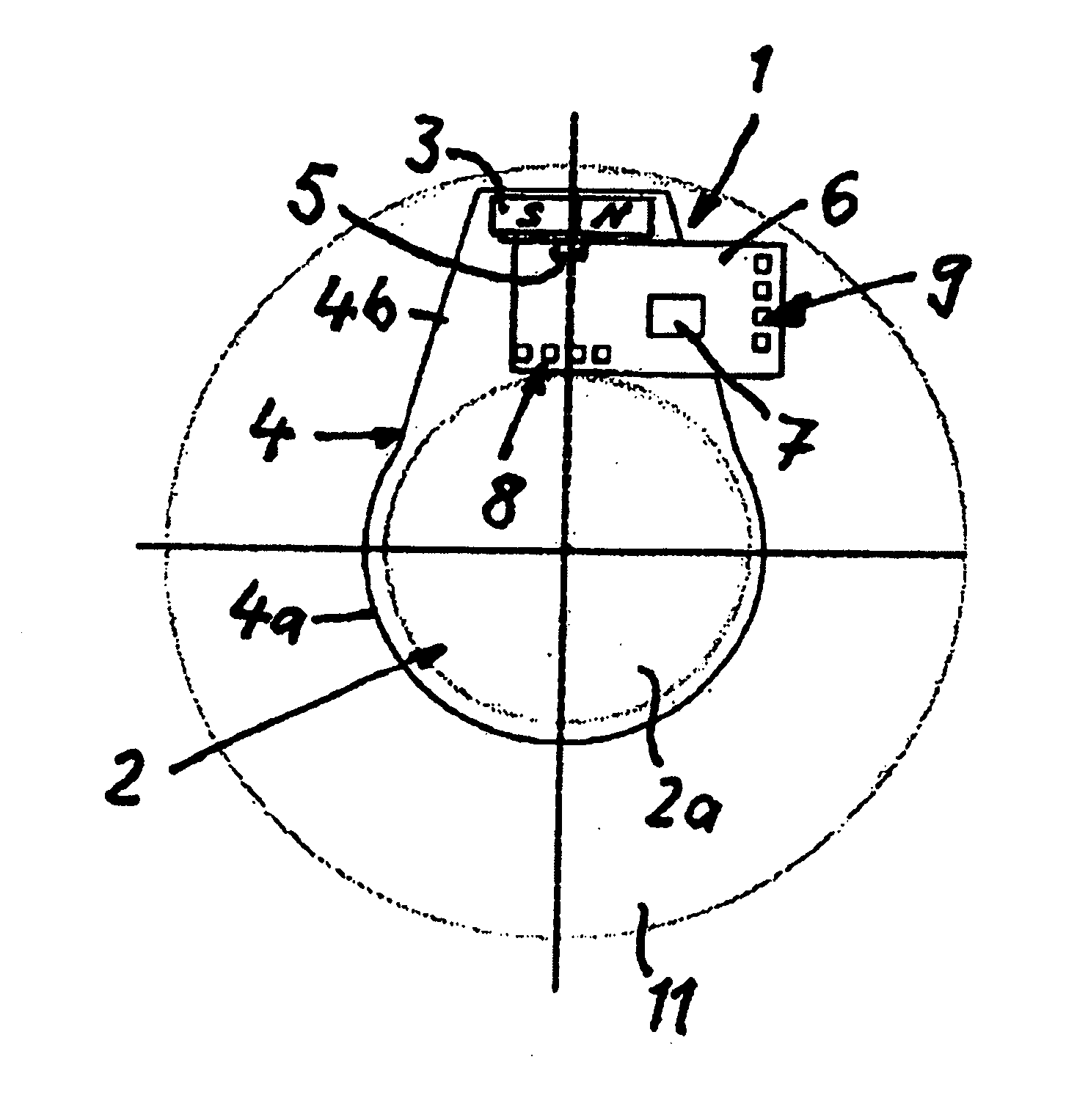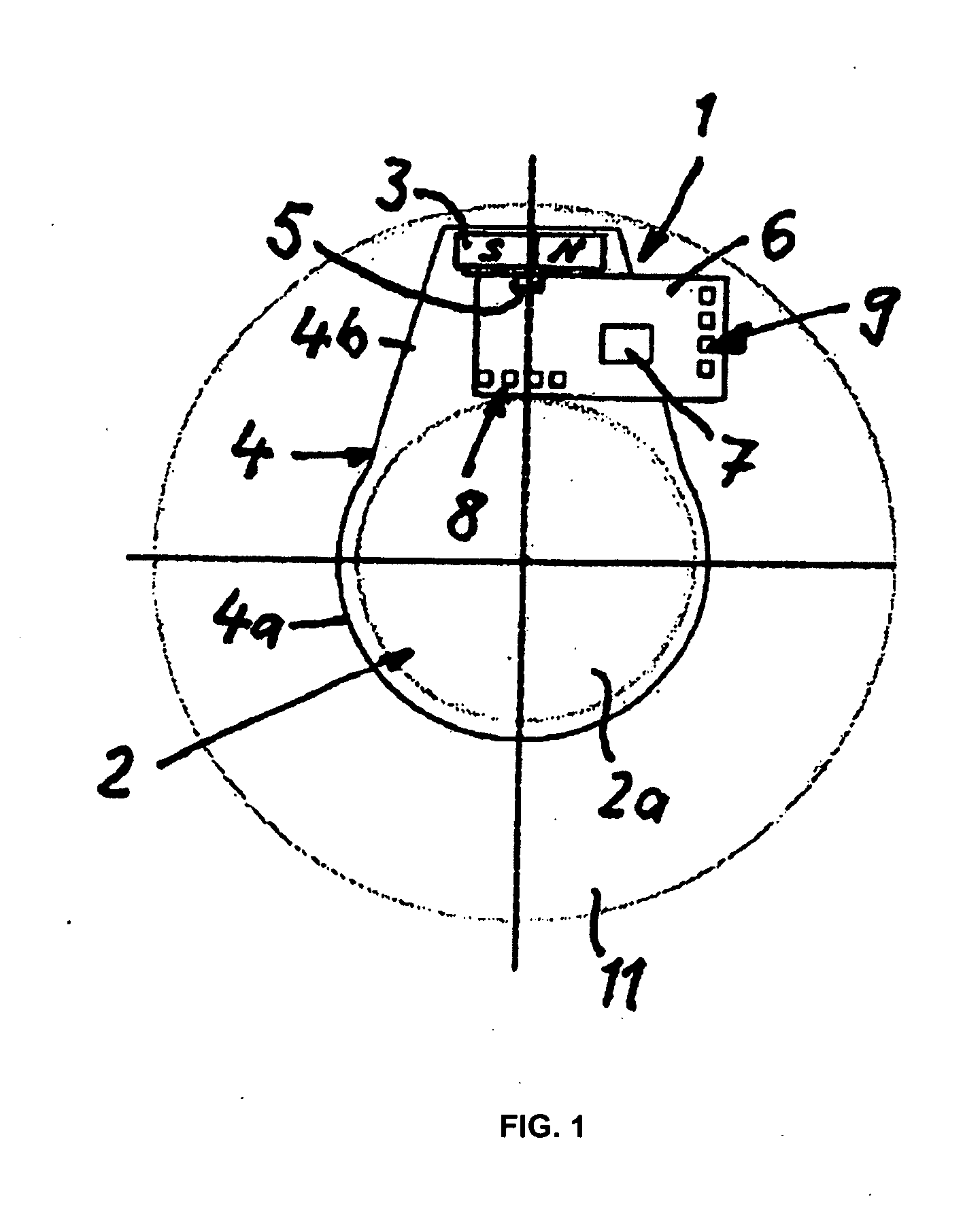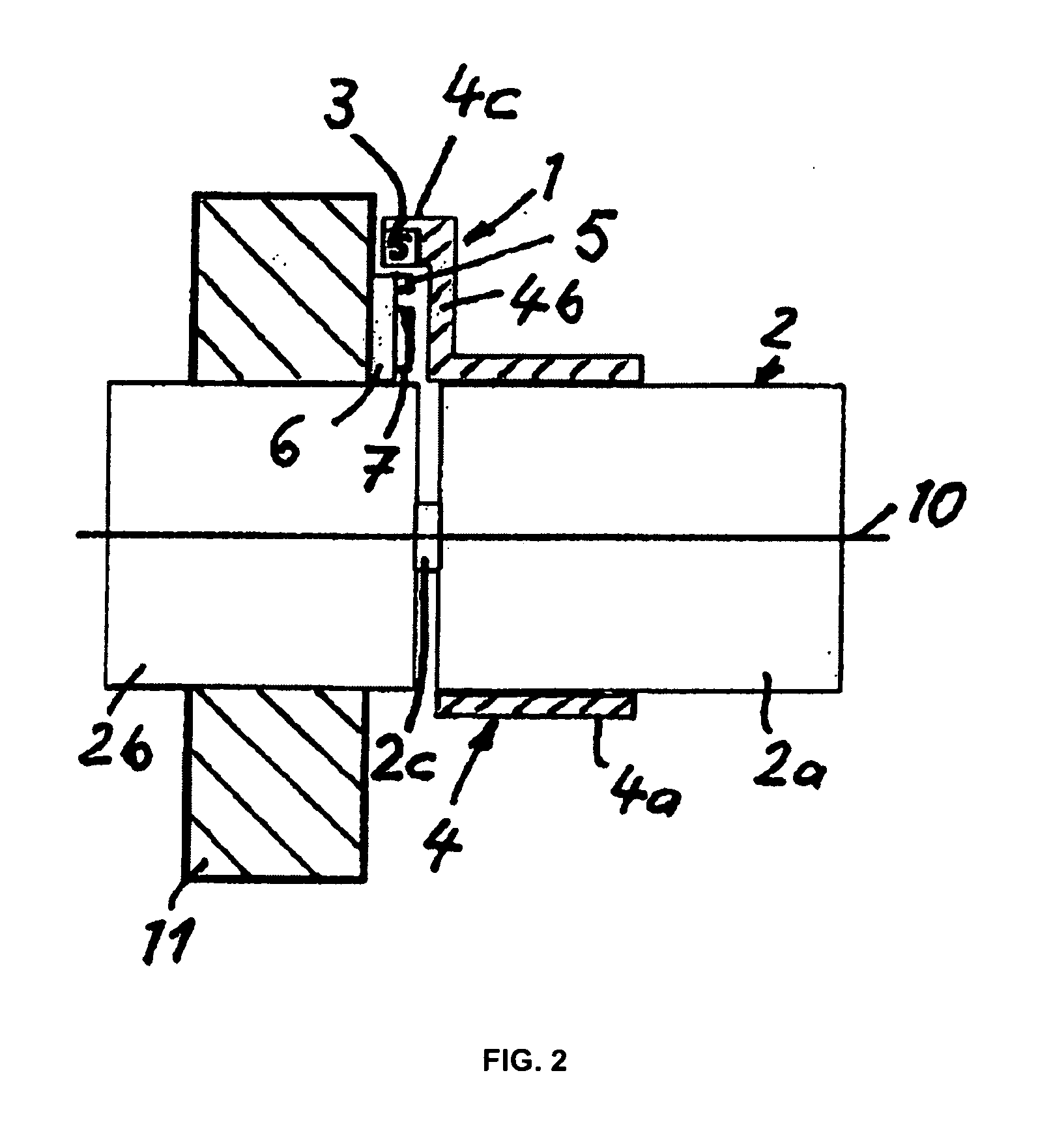Sensor device for measuring torque in steering systems
a technology of steering system and sensor device, which is applied in the direction of mechanical control device, controlling member, instruments, etc., can solve the problems of lower detection accuracy of magnetic field change detected by magnetic field sensor, and consequently less accurate signal supplied by sensor, etc., and achieves compact design and simple design measures.
- Summary
- Abstract
- Description
- Claims
- Application Information
AI Technical Summary
Benefits of technology
Problems solved by technology
Method used
Image
Examples
Embodiment Construction
In the figures, identical components are denoted by the identical reference numerals.
FIGS. 1 and 2 show a first embodiment. According to this embodiment, a sensor device 1 is provided for detecting the torque acting in a shaft 2, wherein the shaft 2 comprises an input shaft 2a, an output shaft 2b and a connecting torsion bar 2c. The torque to be measured acts between the input and output shafts 2a and 2b, which results in torsion in the torsion bar 2c. The torsion is determined by means of the torque sensor device 1 as a measure of the effective torque.
The sensor device 1 comprises a segment-shaped dipole magnet 3, which is rigidly connected to the input shaft 2 by way of a magnet holder 4. The N and S poles of the magnet 3 are located opposite of each other, radially or in the circumferential direction. In addition, the sensor device 1 comprises a magnetic field sensor 5, which is able to detect changes in the magnetic field originating from the magnet 3, which result from relative...
PUM
| Property | Measurement | Unit |
|---|---|---|
| magnetic field | aaaaa | aaaaa |
| magnetic | aaaaa | aaaaa |
| torque | aaaaa | aaaaa |
Abstract
Description
Claims
Application Information
 Login to View More
Login to View More - R&D
- Intellectual Property
- Life Sciences
- Materials
- Tech Scout
- Unparalleled Data Quality
- Higher Quality Content
- 60% Fewer Hallucinations
Browse by: Latest US Patents, China's latest patents, Technical Efficacy Thesaurus, Application Domain, Technology Topic, Popular Technical Reports.
© 2025 PatSnap. All rights reserved.Legal|Privacy policy|Modern Slavery Act Transparency Statement|Sitemap|About US| Contact US: help@patsnap.com



